Original author: Thinking Weird
Opening a long post to record my thoughts: Why is #Bittensor a scam, and why is $TAO heading towards zero?
First of all, although Bittensor officially touts itself as a "fair mining" project, the underlying Subtensor is neither a PoW public chain nor a PoS public chain; it is a single-chain managed by the Opentensor Foundation (the foundation of Bittensor), and the mechanism is very opaque.
As for the so-called "three giants + Senate" dual governance structure, the three giants are three employees of the Opentensor Foundation, and the Senate consists of the top 12 validating nodes, all of whom are insiders or stakeholders.

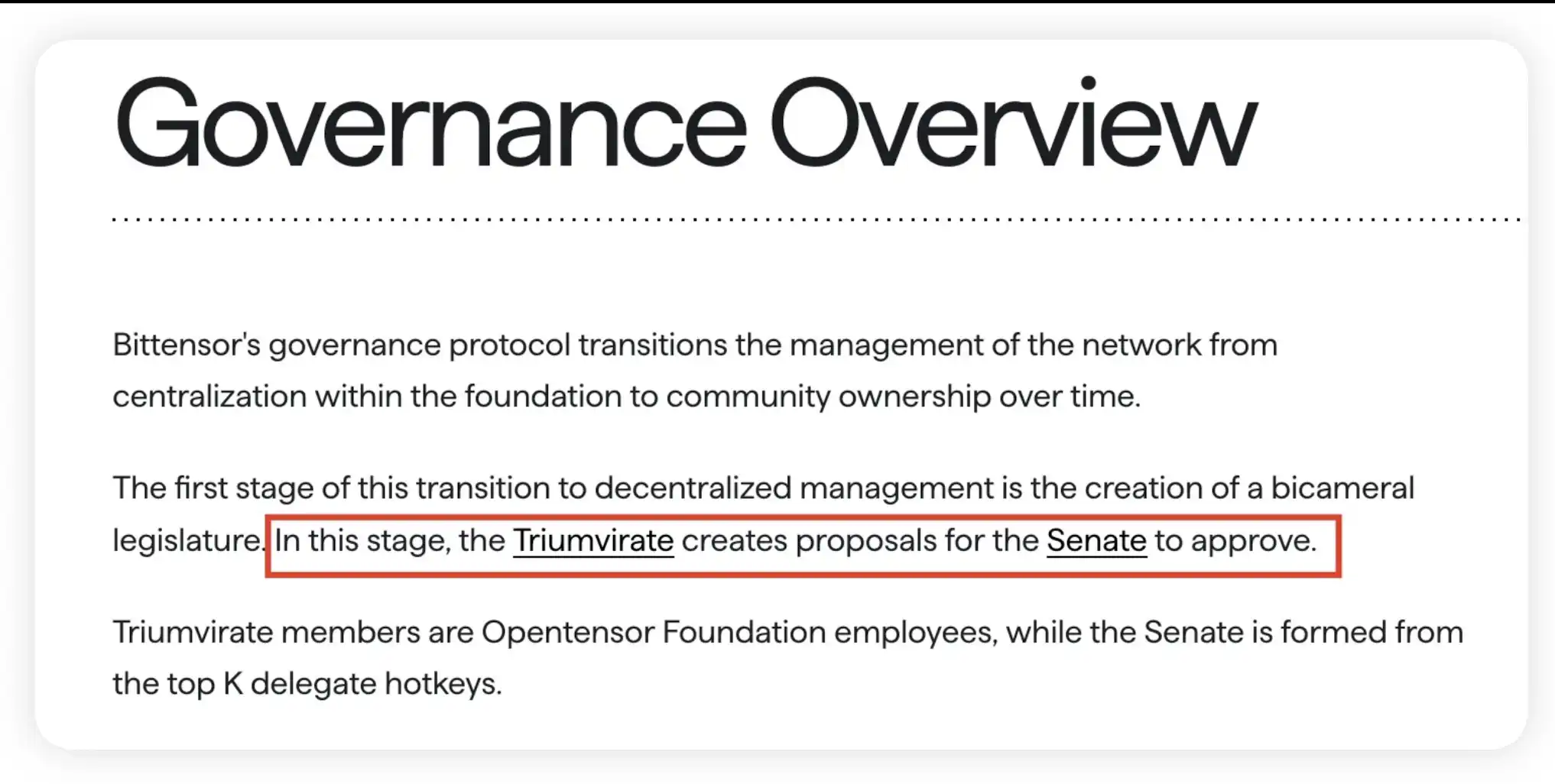
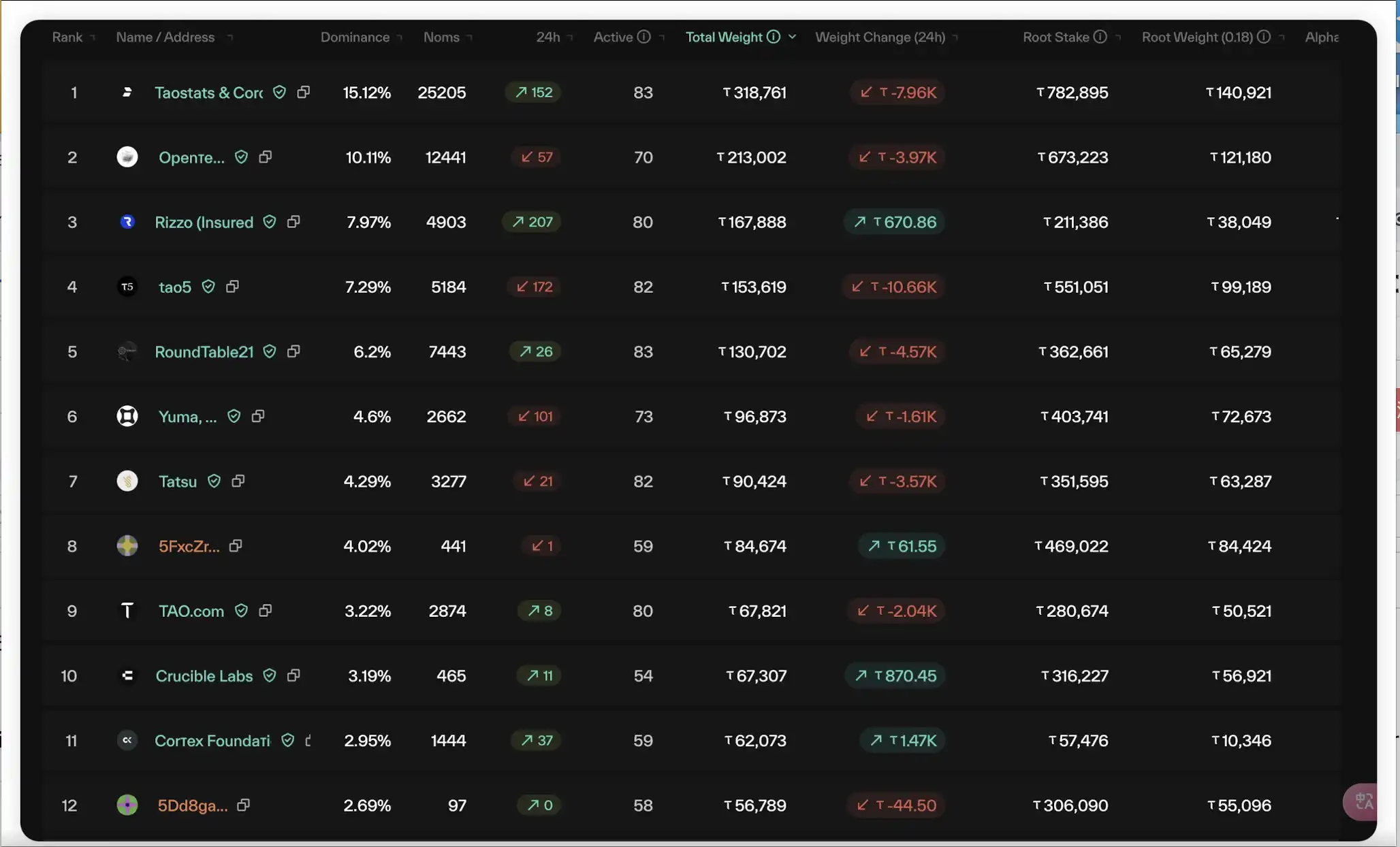
Secondly, the release of "Kusanagi" on January 3, 2021, marked the activation of the Bittensor network, allowing miners and validators to start receiving the first batch of TAO rewards. From the network activation to the launch of the subnet on October 2, 2023, a total of 5.38 million TAO has been mined. However, there are no documents or materials explaining the rules for distributing the tokens generated during the period from January 3, 2021, to October 2, 2023, and their final destination.
It can be reasonably speculated that this portion of tokens has been divided among internal members and interest groups, as Bittensor is not like Bitcoin; it is incubated and invested by VCs.
If we divide this portion of tokens by the current issuance of 8.61 million, it means that at least 62.5% of TAO is in the hands of internal members and interest groups. Additionally, the Opentensor Foundation and some invested VCs also operate validating node businesses on Bittensor, so the proportion of chips in their hands will only be more than this 62.5% figure.
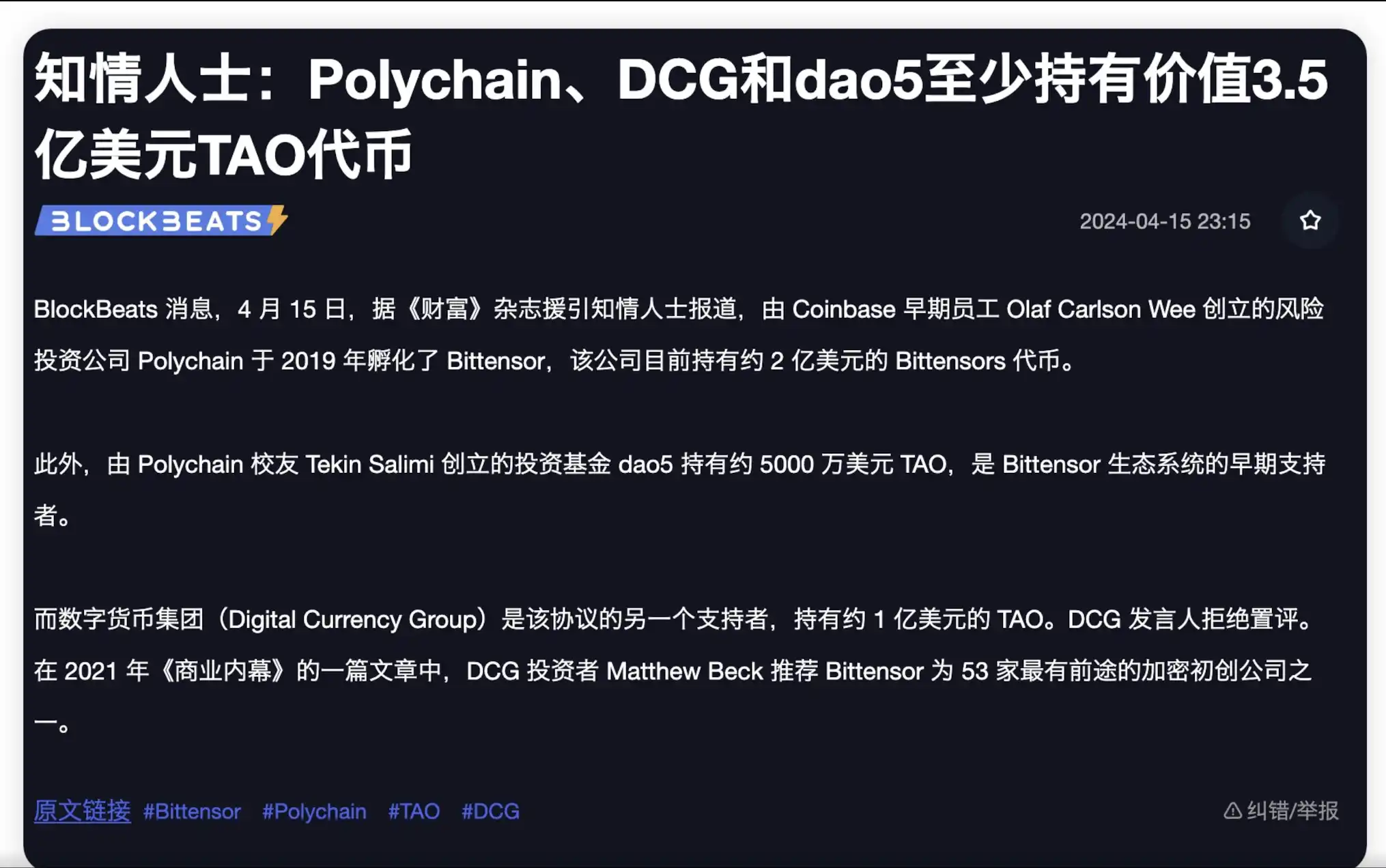
Like the OM that collapsed a few days ago, all projects whose market value you don't understand why it's so high often have distorted market caps created by poor liquidity.
Billions market cap backed by poor liquidity.
The following chart shows the historical staking situation of TAO. Do not be deceived into thinking that the staking rate of TAO has gradually increased from low to high. It is drawn this way because TAO is experiencing severe inflation.
In fact, the staking rate of TAO has never been lower than 70%, peaking at nearly 90%. Based on TAO's current market cap of $2 billion, this means that at least $1.4 billion worth of TAO has never participated in circulation. The actual market cap of TAO is only $600 million, while the corresponding FDV is as high as $5 billion, a typical low liquidity, high market cap project.
The so-called number one AI project by market cap, how the bubble has been inflated by the main players, please savor it.

Finally, the so-called dTAO upgrade is more like providing an exit liquidity opportunity for OGs. It allows you to buy subnet tokens with high multiples, taking over the TAO in the hands of interest groups.
According to the three plate theory, the dTAO upgrade of Bittensor in February this year was introduced under the circumstances where the "dividend plate" was difficult to sustain, necessitating the introduction of new Ponzi scheme models "split plate" and "mutual aid plate" to deleverage. The core purpose is to fabricate a new narrative to attract new external liquidity to continue to extract, as the old narrative weakens and external liquidity is quickly exhausted.
First is the "split plate": By allowing all subnets to issue tokens, TAO successfully positions itself as the base currency for all Bittensor subnet tokens, its value supported by dozens of (and increasingly more) subnet tokens.
Due to the shallow depth of trading pools, subnet tokens often experience astonishing increases. With this, Bittensor presents a facade to the outside world that the ecosystem can provide high ROI opportunities. The exaggerated nominal ROI provided by subnet Alpha tokens artificially creates significant buying pressure for TAO and provides cover for the root network validating nodes to sell TAO.
Unfortunately, Bittensor's closed ecosystem, combined with the market environment shifting from bull to bear, has resulted in the dTAO upgrade failing to attract sufficient external liquidity, and even internal liquidity (those TAO staked in the root network) has not been adequately mobilized.
At the same time, the lowering of entry thresholds for subnets and the lack of limits on their number have led to excessive and rapid issuance of tokens, diluting the already limited overall liquidity of the Bittensor ecosystem.
Next is the "mutual aid plate." Unfortunately, the issuance of tokens by Bittensor's subnets cannot establish a mutual aid plate model like Pump.fun on Solana, where funds can circulate highly, because Bittensor's network infrastructure is very poor, and even different subnet tokens cannot be exchanged, making it difficult for participants in subnet tokens to migrate liquidity between different subnets. This further exacerbates the liquidity dilution problem caused by high split rates, making it impossible to keep funds continuously participating in speculation within the market.
Once the large stakers in the root network begin to collectively flee, liquidity both inside and outside the market will quickly dry up.
The moment you sell, game over.
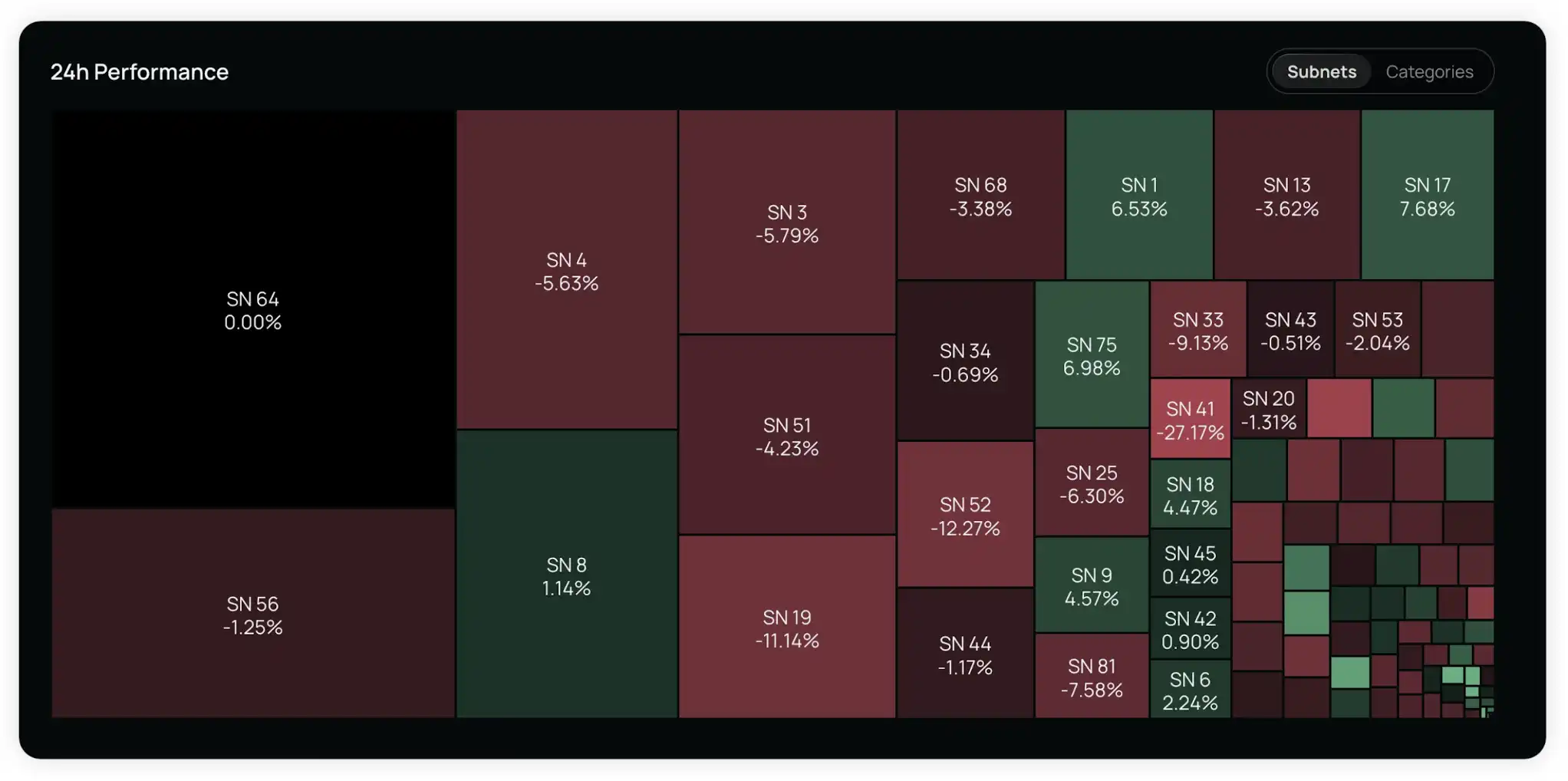
So, are the big players fleeing? The answer is "they are fleeing"!
Since the launch of dTAO:
➤ The Bittensor protocol injected 450,000 TAO into the subnet pool
➤ 150,000 TAO (33%) flowed to the root network validating nodes through the "automatic sell" mechanism
➤ The staking amount in the root network (τ₀) decreased by 150,000 (5.86 million → 5.71 million)
This means:
300,000 TAO (≈$70 million) successfully escaped from the root network and may have been liquidated in CEX.
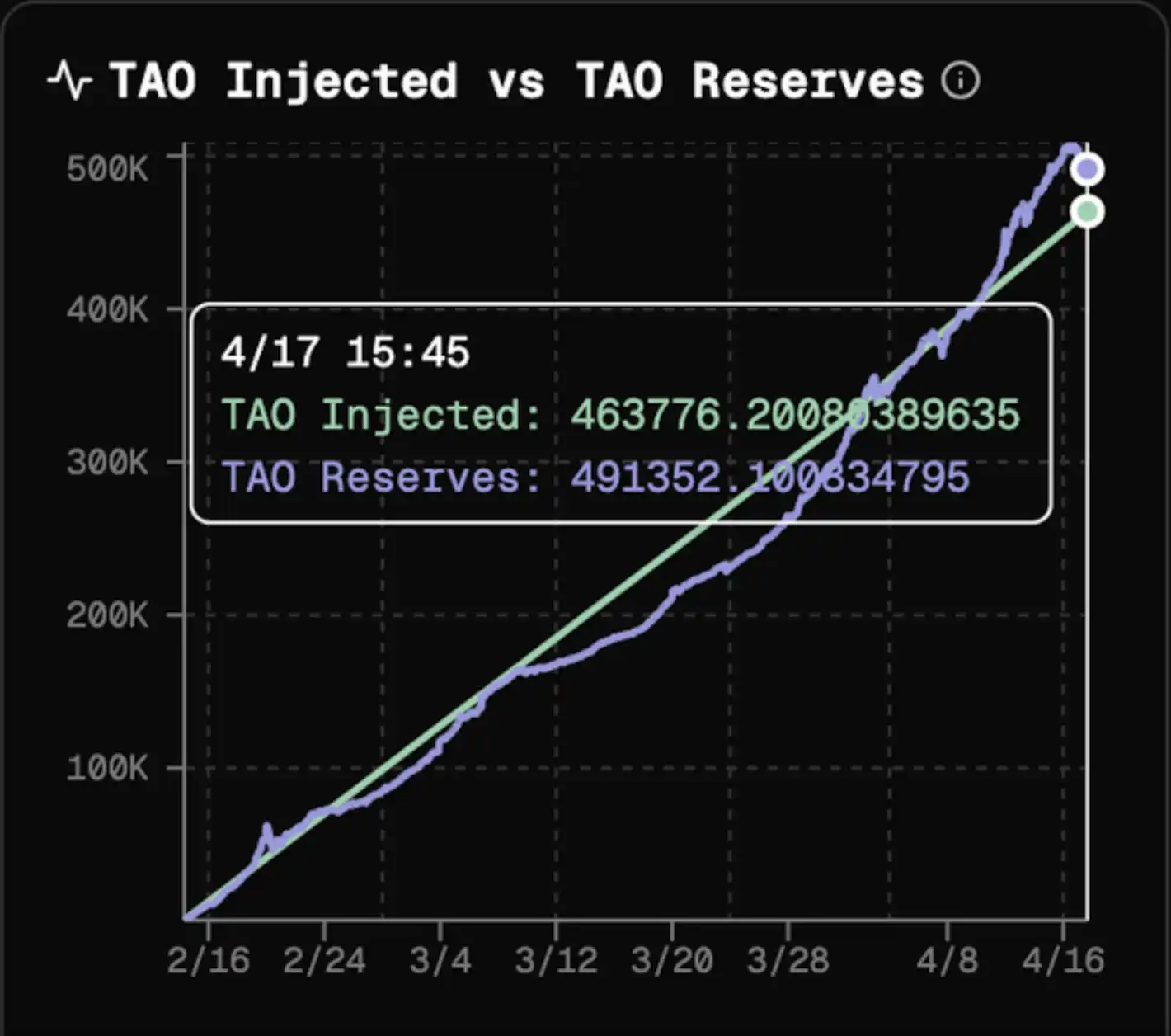
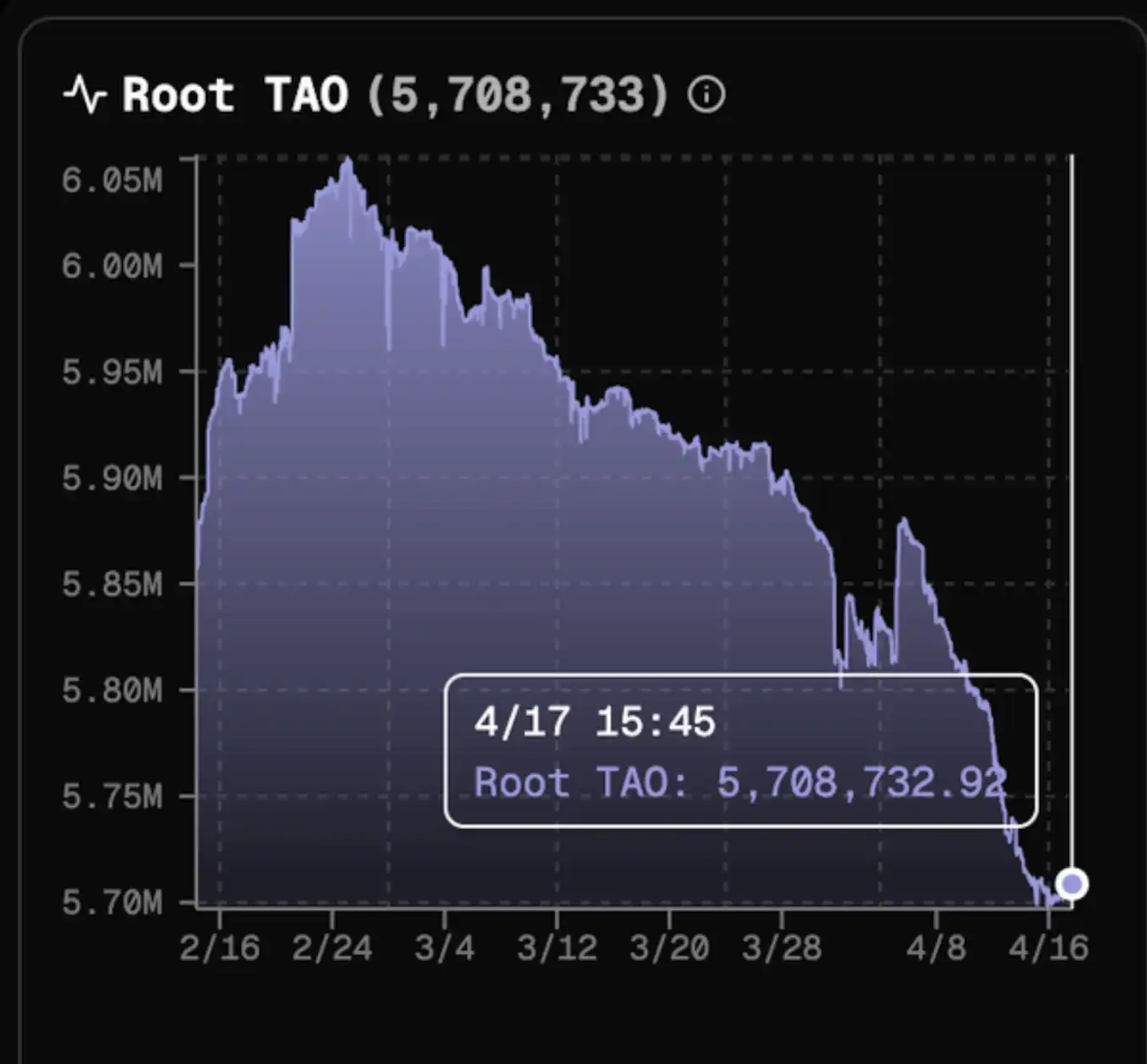
Moreover, Bittensor's basic structure was previously the subnets and miners. Bittensor's previous model was like a VC, giving money to projects so they could focus on building valuable business models without immediately worrying about how to make money to ensure a balance of income and expenditure. This was the core reason for attracting projects to create subnets on Bittensor.
And projects attracted miners who provide computing power (in Bittensor's terms, "intelligence") to Bittensor, creating a "you scratch my back, I scratch yours" situation, which is the core reason Bittensor could become the largest market cap crypto AI project.
However, after the dTAO upgrade, the interests of subnet project parties, miners, and validating nodes are no longer aligned, and the original "you scratch my back, I scratch yours" no longer exists. The dTAO model offers no benefits to subnet project parties, and the collapse of the economic model is currently the biggest and most fundamental problem for Bittensor.
In Bittensor's dTAO model, subnet Alpha tokens are a kind of "warrant" obtained by staking TAO in the subnet, and are not generally tradable tokens. This makes it difficult for subnet project parties to invent any effective tokenomics for these tokens. These Alpha tokens, apart from being able to generate more Alpha tokens, have no utility for retail investors. Based on my observations, subnet project parties often announce using project revenue to buy back Alpha tokens, such as Chutes (SN64), to boost the token price.
But if Subnet Owners can only empower Alpha tokens in this way, then a funny situation arises. The 18% Alpha tokens allocated to subnet project parties from dTAO can only be held by the project parties themselves forever. After all, if you have announced that you will use project revenue to buy back, why would you sell your own tokens?
Selling and buying back are contradictory.
Therefore, subnet owners not only cannot gain any income from the dTAO model, but they even have to subsidize it: creating external income and injecting it into their subnet Alpha tokens. This means that subnet project parties and miners are essentially working for the validating nodes. The validating nodes, as the privileged class of the Bittensor network, not only cannot do anything of value but can continuously sell subnet Alpha tokens from the beginning of the dTAO upgrade, with TAO flowing to the root network accounting for as much as 1/3 of the daily emissions.
The reason Bittensor can attract other projects to build subnets on it is essentially that the previous TAO emissions served as a good subsidy mechanism for emerging projects without income, allowing these projects to focus solely on running their business models.
If this subsidy mechanism not only disappears but even reverses, why would subnet project parties still want to build subnets on Bittensor? Why not go solo and keep all the income for themselves? Isn't that more appealing?
Thus, the dTAO model, as a means for interest groups to offload their tokens, is harming the foundational base that Bittensor has developed to this day. Although most subnet business models in the Bittensor ecosystem are utterly worthless, without them, Bittensor would lose its last shred of cover.
References:
Bittensor Official Documentation: docs.bittensor.com
Research report "Bittensor: When Does the Music Stop" by @harry_xymeng: prism-pancake-61a.notion.site/Bittensor-432c…
@thecryptoskanda's "Three Plate Theory - The Ultimate Guide to Ponzi Construction": x.com/thecryptoskand…
免责声明:本文章仅代表作者个人观点,不代表本平台的立场和观点。本文章仅供信息分享,不构成对任何人的任何投资建议。用户与作者之间的任何争议,与本平台无关。如网页中刊载的文章或图片涉及侵权,请提供相关的权利证明和身份证明发送邮件到support@aicoin.com,本平台相关工作人员将会进行核查。




